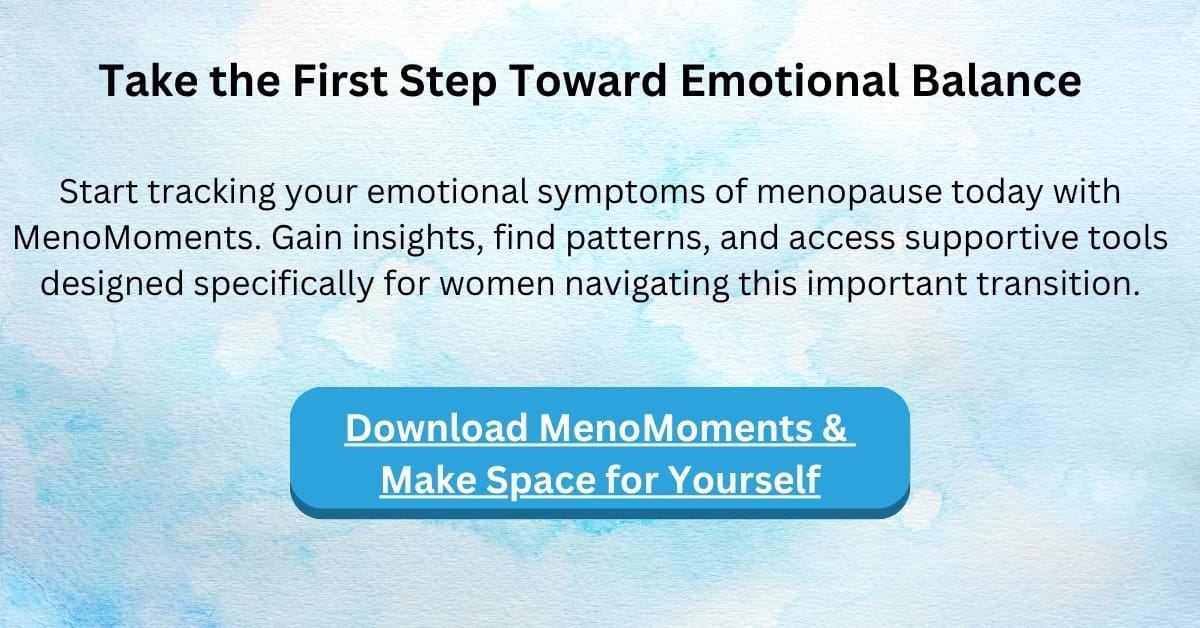Rewriting Your Story: How to Reinvent Yourself in Your 50s and Beyond
Ready for a fresh chapter in your 50s or beyond? This inspiring guide explores how to reinvent yourself with purpose, passion, and confidence—no matter your age. From career pivots to personal growth, discover how midlife can be your most powerful reinvention yet.

Starting a journey of self-discovery in your 50s can be exciting. This stage, often called the 'golden years', brings wisdom and a fresh start. It's a chance to make your life story exciting, like Vera Wang and Samuel L. Jackson did later in life.
Reinventing yourself in your 50s means writing a new chapter with purpose. It could be a career change, exploring new hobbies, or trying new things. Your story is waiting to be rewritten.

Reinvention in your 50s is about looking back, dreaming, and taking action. It's a time to break free from norms and find new passions. Many have successfully reinvented themselves, and you can too.
This article aims to guide you on this journey. It's about embracing change and moving forward with confidence.
Key Takeaways
- The 50s offer a unique opportunity for midlife reinvention and personal growth.
- Inspiration can be found in stories of successful individuals like Vera Wang and Samuel L. Jackson.
- Reinventing yourself in your 50s is about leveraging life experiences to open new doors of possibilities.
- This phase is one of action, reflection, and dreaming – all essential for rewriting your life's narrative.
- Prioritizing what's truly important can align your life more closely with your passions and values in this second chapter.
Understanding Self-Transformation in Your 50s and Beyond
Starting a journey of self-discovery in later life often means facing big changes and growing personally. These changes can come from many life events, like new jobs, losing loved ones, or adjusting to an empty nest. These moments are key to rethinking and redoing one's life path.

This stage of self-change touches on emotions, mindsets, and practical steps. Experts like Brené Brown say being open and accepting of our flaws and fears is key. This openness can lead to deep personal growth and understanding of ourselves.
Knowing how to handle these changes helps us see that self-discovery is more than finding new parts of ourselves. It's also about making peace with our past. The Transtheoretical Model of Change (TTM) shows stages like precontemplation and action. It helps us plan and move through our personal growth journey.
Looking at life changes in the 50s and beyond, we see them as chances for growth, not just hurdles. This time of life is full of new possibilities and chances to rewrite our stories in meaningful ways.
Embracing the Desire for Change
Reaching your 50s and beyond can spark a strong desire for change. It's a time to reflect on past achievements and explore new dreams. Recognizing the signs for a new chapter and understanding what drives these changes are key to rewriting your story.
Recognizing the Signs You're Ready for a New Chapter
Feeling ready for a new chapter can come from personal insights or life events. You might feel unfulfilled in your current role or want to pursue long-held passions. Here are signs you might be ready to start anew:
- A persistent desire for something new or different
- Feeling unfulfilled despite success in your current role
- The urge to pursue passions or interests that have been set aside
- Realizing that you have more to offer and learn
Motivating Factors for Midlife Reinvention
Once you've decided to change your life, understanding what motivates you is crucial. These motivations vary from person to person:
- Pursuing long-held dreams or interests that were previously postponed
- Adapting to life changes such as empty nesting or retirement
- Seeking a renewed sense of purpose or fulfillment in life activities
These factors not only drive the desire for change but also empower you to start this journey. A midlife reinvention can profoundly impact your life and society.

Navigating these transformative periods can be easier with support from peers and professionals like Dr. Nancy Schlossberg. Embracing this new chapter is about more than changing what you do. It's about redefining who you are and how you live.
Identifying Areas for Personal Growth and Development
As you move past your 50s, finding key areas for growth is vital. This part will help you see where you can make big changes. These changes can bring you deep happiness and success.
Personal Skills and Hobbies: Thinking about your hobbies is a great way to start growing. You might learn a new language, play a musical instrument, or explore fine arts. Doing these things not only improves your skills but also makes life more interesting and balanced.
Career and Professional Development: Midlife often means a chance to rethink your career. Sites like LinkedIn Learning have lots of resources for all career levels. They help you get better at your job and maybe even move up.
Health and Wellbeing: Taking care of your health is very important now. The National Institute on Aging has tips for staying physically and mentally healthy. By staying active, eating well, and getting regular check-ups, you can feel happier and more energetic.
Working on these areas can really improve your life in your 50s and beyond. Every step you take brings you closer to a more rewarding future.

Rewriting Your Story: How to Reinvent Yourself in Your 50s and Beyond
Starting a self-discovery journey in your 50s or later is a chance to rewrite your life narrative and transform your life story. It's not just about making changes. It's about finding out who you truly are and living a life that matches your values and dreams.
To start this big change, you need to imagine a new version of yourself. This means looking into what you really want, what matters most to you, and what kind of impact you want to make. It's a time for deep thinking, needing courage and dedication to explore who you've been and who you want to be.
Martha Beck says in "Finding Your Own North Star" that to rewrite your life narrative, listen to your inner voice. This inner voice helps you see what you really want, not just what others expect. It guides you to a path that truly feels like you.
| Phase | Focus | Outcome |
|---|---|---|
| Reflection | Understanding past and current life stories | Clarity about what no longer serves you |
| Exploration | Exploring new interests and opportunities | Identification of passion and purpose |
| Recreation | Crafting a new narrative and taking action | A transformed life story deeply aligned with personal values |
The journey of self-discovery and changing your story never ends. Every choice and experience can lead to a new chapter or even a whole new book in your life. This act of rewriting is not just about feeling differently about your life. It's about changing your reality to match your soul's deepest desires.
So, as you transform your life story, remember it's not just about reaching a goal. It's about enjoying and learning from the journey. Welcome the surprises and challenges of self-reinvention. Each step is a vital part of your amazing story.
Setting Realistic Goals for Your Second Chapter of Life
Starting your second chapter is exciting and needs clear goals. You might want to grow personally or professionally. Knowing how to set goals is key. It helps you stay on track with your life's plans in your 50s and beyond.
As you start anew, it's important to have both short-term and long-term goals. This helps you make steady progress and stay motivated.

Short-term vs. Long-term Objectives
Short-term goals are like stepping stones to your big dreams. They are set for a few months to a couple of years. They are specific and easy to start right away. Long-term goals, on the other hand, take years and need constant effort and flexibility. They are your big dreams and guide your life's path.
| Goal Type | Examples | Time Frame |
|---|---|---|
| Short-term Goals | Learning a new skill, starting a fitness regime | 1 month - 2 years |
| Long-term Goals | Achieving financial independence, mastering a new language | 3 years - 10 years |
SMART Goal Setting for Effective Change
To make sure your goals are real and achievable, use the SMART method. SMART means Specific, Measurable, Achievable, Relevant, and Time-bound. Each part makes your goals clear and reachable in a set time. This approach improves your chances of success, giving you a sense of achievement and direction.
Remember, setting goals is not just about dreaming big. It's about creating a roadmap to get there safely and surely. Think of your goals as important milestones in your life's second chapter.
Embrace the journey with strategy and optimism, and watch as each goal moves you closer to the person you aspire to become.
Overcoming Challenges and Setbacks
In midlife, people face many challenges that can feel overwhelming. It's important to know how to deal with these obstacles. Key steps include overcoming midlife challenges, fighting against what society expects, and finding support.
Dealing with Societal Expectations
Society often has a fixed idea of what midlife should be like. This can lead to pressure and conflict. It's crucial to remember that midlife is a time for growth and change.
Finding Support and Community
Support is essential during this time of change. Connecting with others who are going through similar experiences can offer emotional support and valuable advice. Joining groups like AARP's online forums or local community centers can make you feel more connected and part of a community.
Staying Resilient in the Face of Adversity
Being resilient is crucial in midlife. It means being flexible and open to change. This mindset helps you overcome obstacles and enjoy the surprises of life's second chapter.
| Challenge | Strategy | Benefit |
|---|---|---|
| High societal expectations | Reject stereotypes, set personal goals | Autonomy in life choices |
| Lack of support | Join forums and community groups | Shared experiences, increased motivation |
| Resilience against setbacks | Adaptability and open-minded planning | Persistence in pursuing personal growth |

Finding Inspiration and Role Models
When people reach their 50s, finding midlife role models is key. These models have navigated similar paths. Their inspirational life stories offer comfort and a roadmap for second act success.
These stories show that success in later years is possible. They motivate and inspire us to dream big and set new goals.
Take Laura Ingalls Wilder, who wrote her first novel at 65. Or Colonel Harland Sanders, who made Kentucky Fried Chicken a success in his 60s. Their stories prove that age doesn't limit success.
Here are some lessons from others who found success later in life:
- Embracing New Challenges: Trying new things can spark passion and excitement.
- Continuous Learning: Keeping up with education and skills can lead to new chances.
- Networking: Connecting with others starting new ventures can offer support and fresh ideas.
- Persistence: Many success stories highlight the need to keep going, even when faced with hurdles.
Success in later years is not just about keeping up old habits. It's about setting new goals and moving forward with energy and hope. The stories of midlife role models show us that we can achieve great things, no matter our age.
Implementing Changes and Taking Action
Starting to change your life begins with small steps. This phase turns big dreams into real actions. It leads to new and exciting paths.
Starting small is key to gaining momentum. Taking small, achievable steps builds confidence. This helps move towards bigger goals.
It's also important to evaluate progress often. This means celebrating wins and making changes when needed. Life changes, and so should our plans to tackle it.
Think about setting weekly or monthly check-ins. These help see how small changes add up to big goals. It's about being honest with yourself about your progress.
Plans can change as you grow. New interests or challenges may arise. Adapting to these is a smart move for lasting growth.
By taking action and checking how it works, you stay on track. Each step should reflect your changing goals and dreams.

Conclusion
Our lives are full of surprises, but embracing change in our 50s and beyond is special. We've looked at how people change and grow during this time. It's all about personal growth, setting goals, and facing challenges with courage and support.
Midlife transformation is more than just a dream. It's a real chance for growth and change. You can improve your skills, change your career, or focus on your health. It's about making your life story reflect who you are today and who you want to be.
Let's remember that age is not a barrier but a chance for new beginnings. Embrace the journey of reinvention. It shows that life is full of endless possibilities. Here's to a rewarding and revealing phase of your life.
FAQ
Can anyone reinvent themselves in their 50s and beyond?
Absolutely. Age shouldn't stop you from growing or trying new things. Many people have made big changes and found success later in life. With the right mindset, you can change at any age.
What are common catalysts that spur self-transformation at this stage?
Many things can spark change later in life. This includes career shifts, personal losses, or a desire for a new start. Each person's journey is unique, but these events often prompt a reevaluation.
How do I recognize that I'm ready for a new chapter?
You might feel restless or unsatisfied with your current life. A strong desire for something different is a sign. Pay attention to these feelings to understand what you want for the future.
What personal skills or hobbies could lead to fulfillment?
Think about what you enjoy and what energizes you. This could be art, learning a new language, or volunteering. Pursuing your passions can lead to new opportunities and fulfillment.
How can I set effective goals for my personal reinvention?
Start with the SMART framework for your goals. This means they should be Specific, Measurable, Achievable, Relevant, and Time-bound. Having both short-term and long-term goals helps keep you motivated.
What if I encounter societal stereotypes about aging during my journey?
You might face stereotypes as you age. To overcome them, focus on being yourself and finding supportive communities. These can help you see aging and reinvention in a positive light.
Where can I find support and community for my journey?
Look for support online, in local groups, or through workshops. A mentor or peer group can also offer encouragement and help you stay on track.
How do I stay resilient when facing adversity?
Cultivate resilience by staying positive, taking care of yourself, and being open to change. Celebrate your achievements, no matter how small. And don't hesitate to reach out for support when needed.
Can you provide examples of people who have successfully reinvented themselves later in life?
Yes, many people have reinvented themselves later. Vera Wang started in fashion in her 40s, and Samuel L. Jackson became famous in his 40s. Laura Ingalls Wilder published her first novel in her 60s, and Colonel Harland Sanders franchised KFC in his 60s. Their stories show success is possible at any age.
What are the first steps to implementing changes in my life?
Start with small actions that align with your goals. Build momentum as you progress. Set achievable goals and regularly check your progress. Stay flexible and open to new insights and changes.
